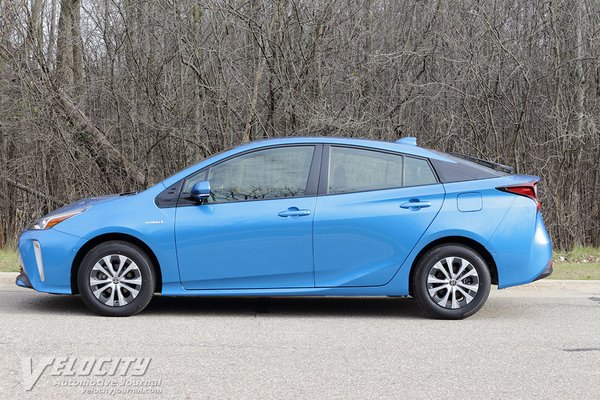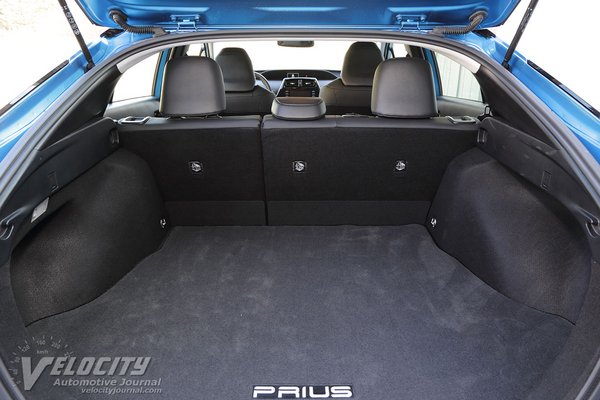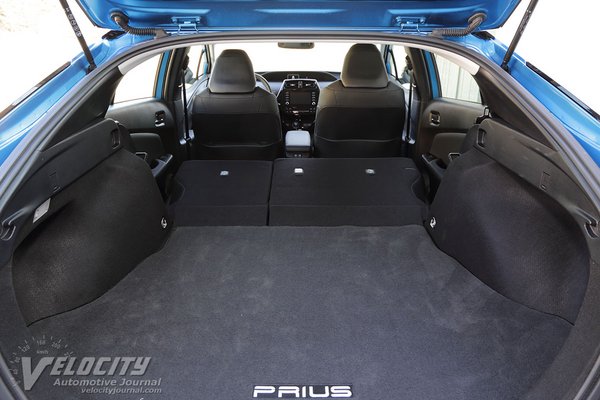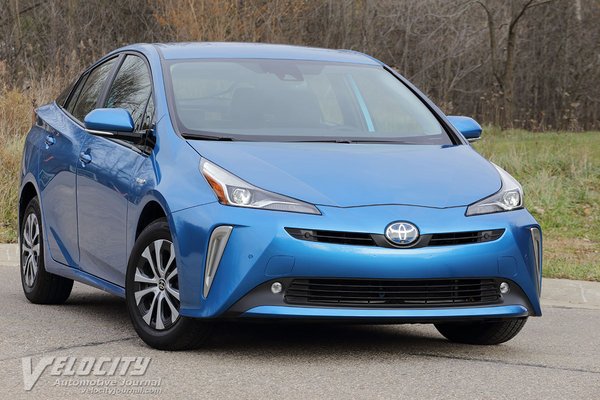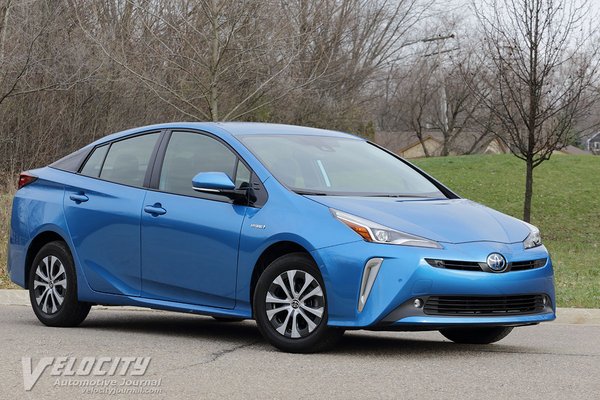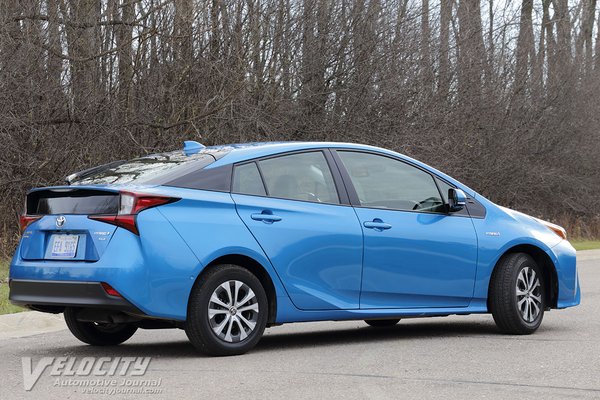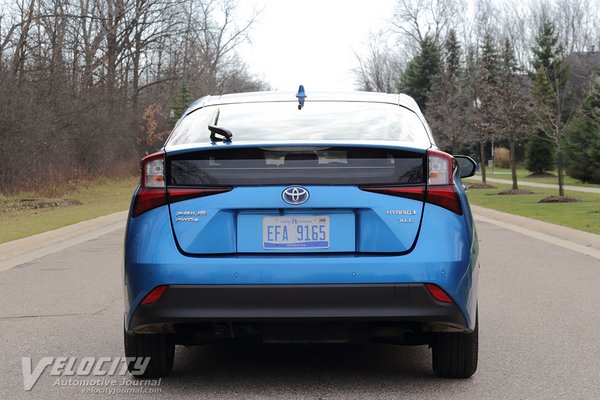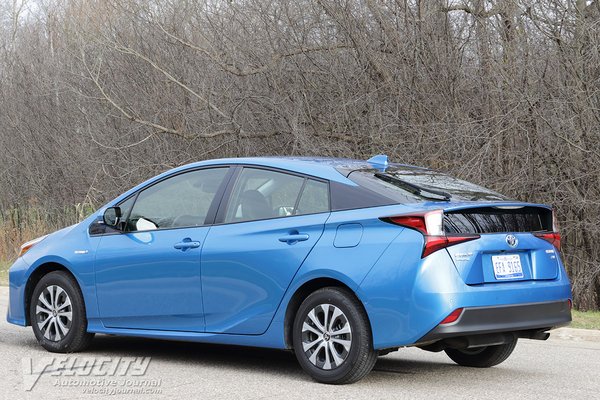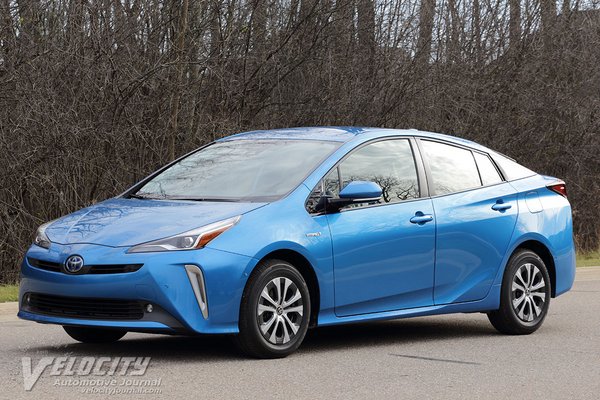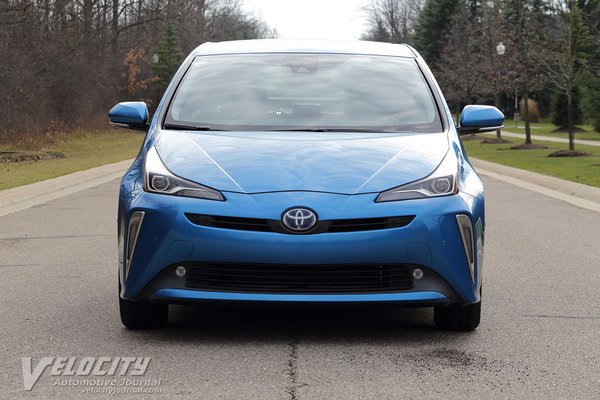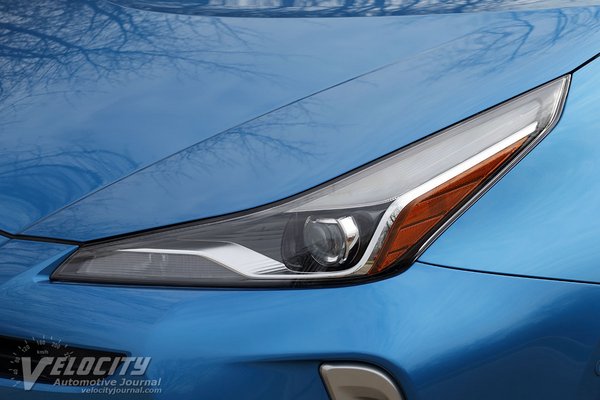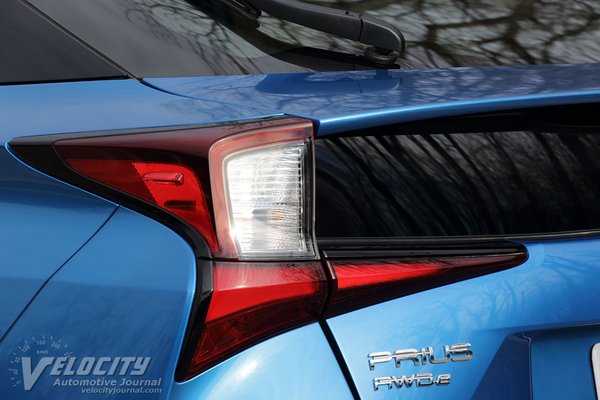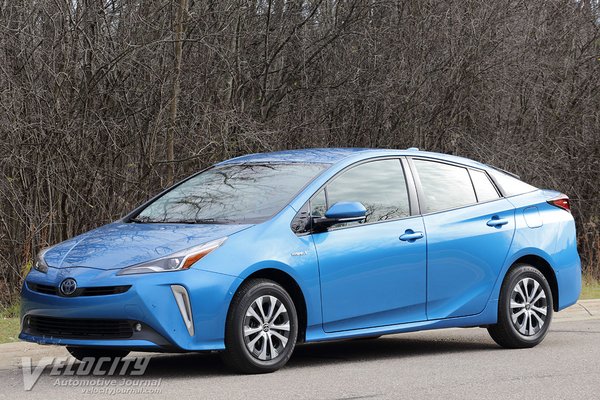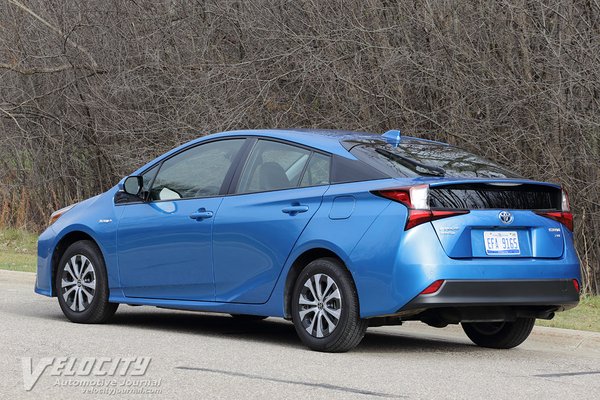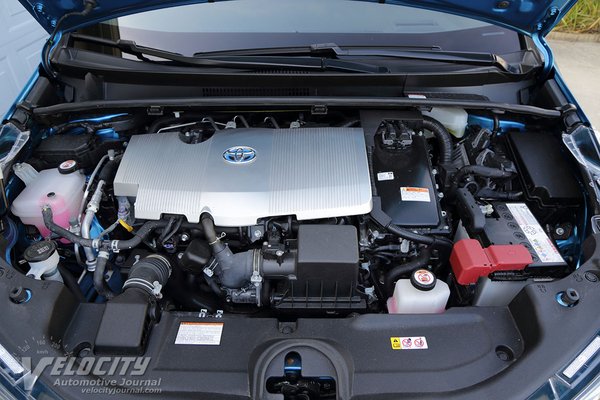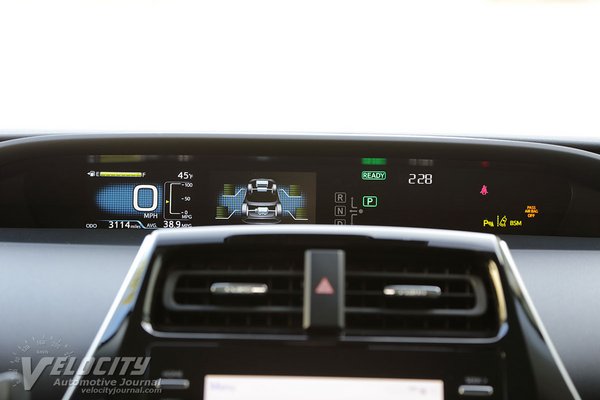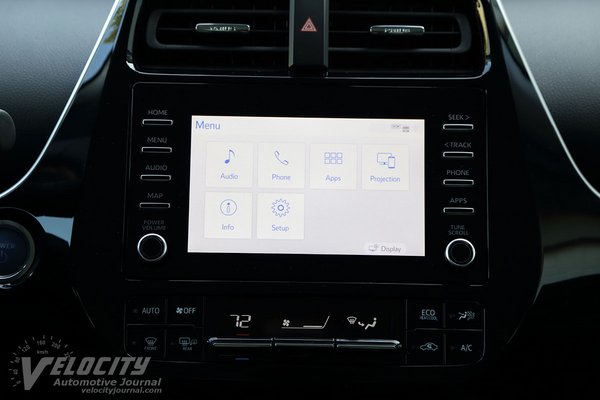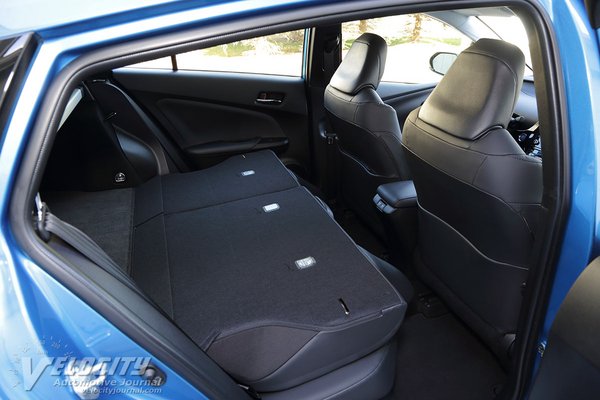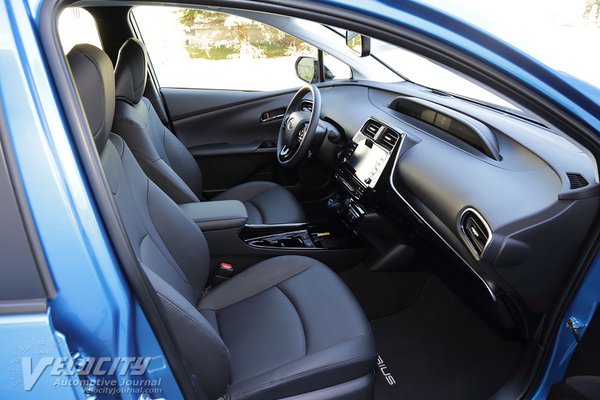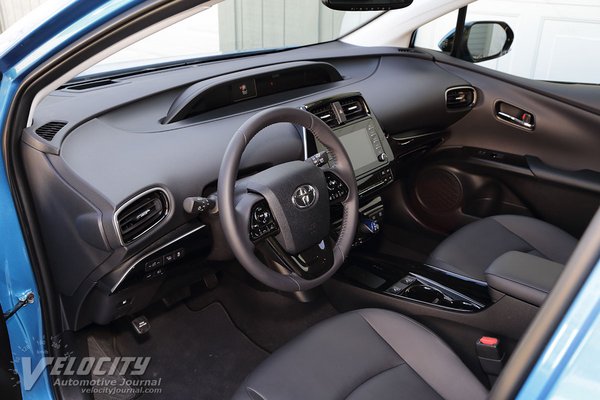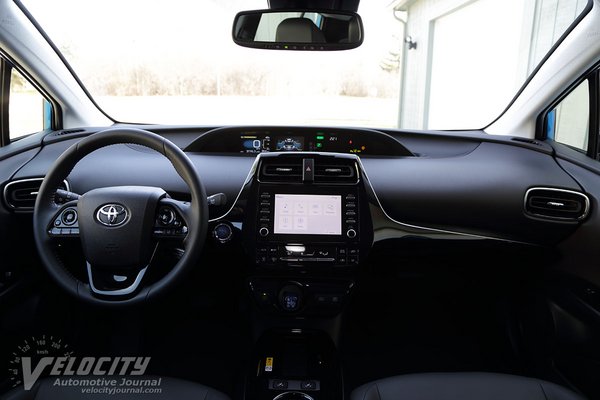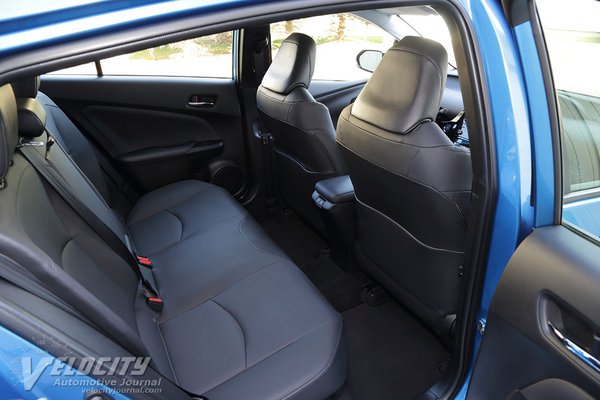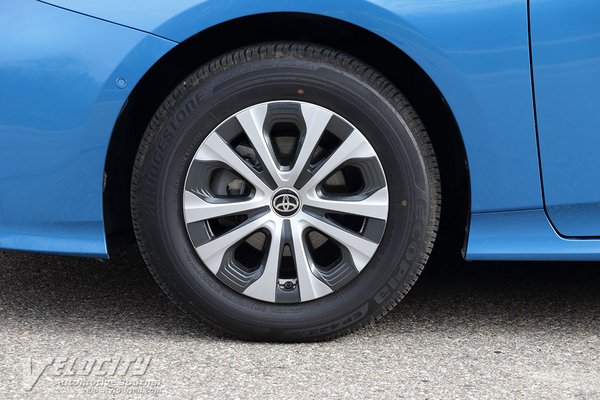2020 Toyota Prius XLE AWD-e
04/13/2021
Shahed Hussain
Since the launch of the current Prius in 2017, Toyota has gradually added new models to cater to different customers: plug-in charging (Prius Prime), more amenities (Prius Limited) and all-wheel drive (Prius AWD-e) are available. The basic Prius L Eco and LE are intended as affordable options for frugal customers, while the midlevel XLE includes popular features as standard.
Toyota offers the 2020 Prius AWD-e in LE ($26,935) and XLE ($29,375) trim. We tested the XLE equipped with the Advanced Technology Package ($800), floor mats/cargo mat ($259), illuminated door sills ($299), door edge guards ($125), and rear bumper applique ($69). The total MSRP plus the $955 delivery & handling fee adds up to $31,757. Toyota has raised the MSRP for the 2021 Prius AWD-e XLE by $200 to $29,575. Heated front seats, head-up display, 7" touchscreen, Apple CarPlay, Amazon Alexa, 15-in. alloy wheels, adaptive LED headlights and foglights are standard. Toyota's Safety Sense technologies include radar cruise control, lane departure alert with steering assist, blind spot monitor, intelligent clearance sonar, and pedestrian detection.
All Prius models are powered by a 1.8L all-aluminum Atkinson cycle inline-4 with dual overhead cams and variable valve-timing (VVT-i). The gas engine output is 96-bhp @ 5,200 RPM and torque peaks at 105 lb.-ft. @ 3,600 RPM. A 600V AC synchronous motor-generator delivers 53-kW (71-bhp) and 105 lb.-ft. of torque; total hybrid system power totals 121 bhp. AWD-e models get a higher capacity 201.6V/6.5Ah NiMH battery pack, instead of the 207.2V/3.6Ah Lithium-ion battery pack in other Priuses. According to Toyota, the NiMH battery chemistry was specified for the AWD-e model due to superior cold weather performance. Coupled to the gasoline engine and electric motor is an electronically controlled CVT (continuously variable transmission) that drives the front wheels. The AWD-e model powers the rear axle via a second motor-generator rated for 7-hp/40 lb.-ft. No center differential or driveshaft connects the gas engine to the rear axle. The motor drives the rear wheels up to 6 MPH depending on available traction, and then up to 43 MPH on demand. EPA fuel consumption ratings for the AWD-e are 52/48 MPG (city/hwy.), a 2 MPG reduction compared to the front-drive XLE. We averaged 50-55 MPG in mixed city and highway driving, but fuel consumption sank to 40 MPG at 35 deg. F ambient temperature.
Replacing the semi-independent torsion beam rear suspension in the previous Prius, Toyota installed a double wishbone setup with coil springs, dampers and a stabilizer bar. At the front are MacPherson struts and a stabilizer bar. Disc brakes are at all four wheels: 10.2-in. dia. front and 10.0 in. dia. rear rotors. An integrated regeneration system turns the front and rear motors into generators to recharge the batteries in light to moderate braking. Steering is a via an electrically-assisted rack-and-pinion system. The XLE wheel and tire package consists of P195/65R15 Bridgestone Ecopia EP422 Plus all-season tires, mounted on 15-inch diameter alloy wheels and wheel covers. Curb weights range from 3,010 lbs. (L ECO) to 3,220 lbs. (XLE AWD-e).
The Prius continues its tradition of simple, functional interior design, but Toyota has upgraded interior materials with greater use of soft touch plastic (such as the dash and door panels). As before, a central instrument cluster has a digital speedometer along with a multi-function display of hybrid system status and fuel consumption. A leather-wrapped steering wheel duplicates controls for audio, phone and infotainment system. The 7" touchscreen controls most infotainment functions, but volume and tuning knobs allow quick audio system adjustments. Optional navigation is enabled via a software download from Toyota. The shift lever has been moved up to the center stack, freeing up space for dual cupholders and a Qi wireless charging pad. Next to the shifter is an EV mode button that switches the Prius to exclusively electric motor drive. A storage bin under the center armrest hides a 12V outlet and a USB port.
Toyota's Softex simulated leather front seats deliver excellent comfort and lateral support. Seat settings are limited to six-way adjustments for the driver and minimal 4-way adjustability for the passenger. An 8-way power driver's seat plus lumbar support is standard on the FWD XLE, but unavailable on the AWD-e XLE. Rear occupants benefit from acceptable legroom and comfort, but headroom is limited for passengers over 5-10" tall due to the low roofline. Although the rear seat can accommodate three passengers, the center position is tolerable for only short trips due to the hard center armrest. Dual USB ports behind the center console can recharge mobile devices.
Toyota has always focused the Prius on fuel efficiency above all, but the current Prius now delivers a driving experience closer to a typical compact sedan. Ride comfort is significantly superior to the previous-generation Prius, no doubt due to the independent rear suspension that replaced the torsion beam axle. The electrically-assisted steering has moderate effort and transmits road surface textures accurately. Steering turn-in response is somewhat delayed, likely because of the low rolling resistance tires. Moderate understeer and significant body roll around curves confirms that the Prius has no sporting intentions. The regenerative braking system engages under moderate deceleration and braking to recharge the battery; the transition from regeneration to the conventional disc brakes is seamless at low speeds.
Driving on the highway, the Prius tracks steadily at 80 MPH. The suspension absorbs frost heaves and potholes, requiring minimal steering correction. Wind, tire and engine noise are pleasantly subdued at highway cruising speeds. At full throttle, the engine drones as the revs rise and hold steady as the CVT selects the optimum RPM for maximum acceleration. In typical urban traffic, the CVT does an excellent job minimizing engine noise and vibration. Of the three drive modes (Normal, Power, and Eco), we usually selected the Normal mode. For silent running, the Prius EV mode can be engaged for 1-2 miles, depending on the battery charge state. In low traction conditions, the rear axle engages automatically; a graphic on the dash displays shows the drive mode. In wet weather, the powertrain mostly drives the front wheels only, so we expect that seriously slippery roads are necessary before the Prius switches to AWD mode.
Among compact hybrids, the Prius continues to be the benchmark in the segment. Adding an AWD model to the lineup should interest customers needing superior winter weather traction combined with excellent fuel efficiency. If you are considering a compact hybrid and the security of AWD in winter is important to you, the AWD-e is your Prius.

